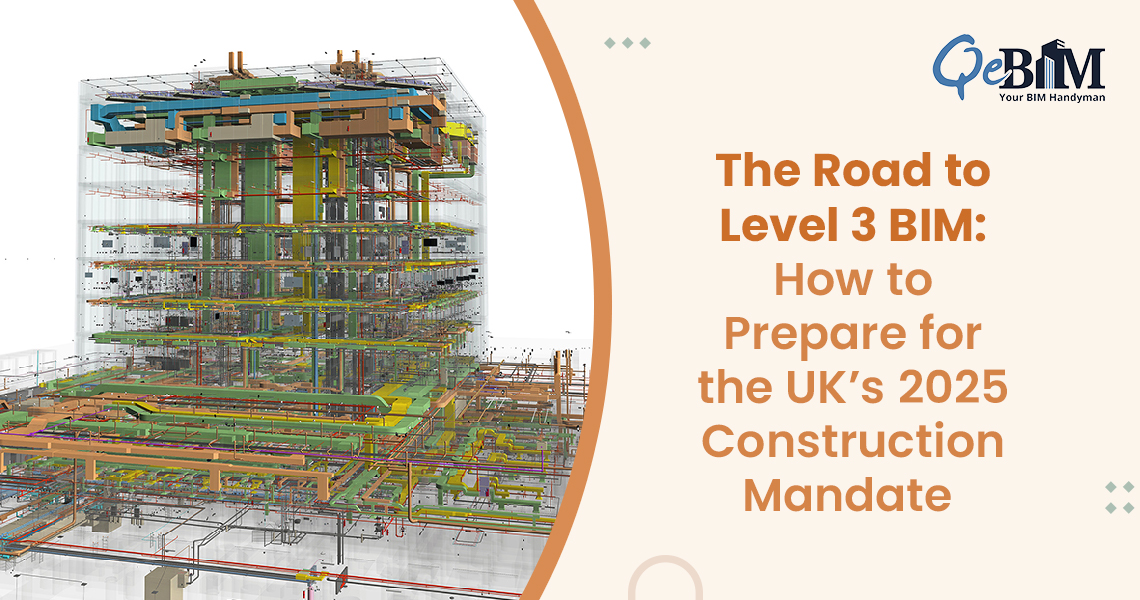Introduction
In the Architecture, Engineering, and Construction industry, Building Information Modelling (BIM) has revolutionized the way projects are planned, designed, constructed, and managed. BIM is a digital depiction of a structure or infrastructure, encompassing both its physical attributes and functional properties, allowing stakeholders to collaborate and make informed decisions throughout the entire lifecycle of a project. However, adherence to BIM standards is crucial and requires a trusted BIM Service Provider for BIM to be truly effective. This blog explores BIM standards and why they are so important.
What are BIM Standards?
BIM Standards are a set of guidelines, protocols, and best practices that standardize the creation, exchange, and management of digital information within a BIM environment. These standards ensure that project data is structured and formatted consistently, enabling seamless collaboration and interoperability among various stakeholders. Different countries and regions might have their own BIM standards, but the underlying objective is the same – to facilitate efficient communication and data exchange.
Why are BIM Standards Important?
1) Enhanced Collaboration: BIM Standards promote a common language and framework for all project participants, including architects, engineers, contractors, and facility managers. When everyone follows the same guidelines, communication barriers are reduced, and team members can better understand and use the shared information. This results in improved collaboration, fewer errors, and faster decision-making processes.
2) Improved Interoperability: The AEC industry comprises numerous software applications, each with its own data format and structure. BIM Standards ensure that data from different sources can be seamlessly integrated and exchanged without losing crucial information. This interoperability is vital for avoiding data silos and creating a holistic view of the project.
3) Consistent Data Quality: BIM Standards define the level of detail and accuracy required for different project phases. This consistency in data quality allows stakeholders to trust the information they receive, reducing the risk of misinterpretation or reliance on outdated data. It also supports efficient asset management and maintenance throughout the building’s life cycle.
4) Cost and Time Efficiency: Adhering to BIM Standards streamlines project workflows and reduces rework. When all project members follow standardized processes, there is less need to recreate information, leading to significant time and cost savings. Moreover, standardized data exchange formats expedite decision-making, resulting in quicker project delivery.
5) Legal and Regulatory Compliance: As BIM becomes more prevalent in the industry, many governments and organizations have started mandating BIM Standards for public projects. Adhering to these standards ensures that projects comply with regulatory requirements and meet the necessary legal obligations.
6) Long-Term Sustainability: BIM Standards contribute to the long-term sustainability of buildings and infrastructure. By promoting the inclusion of crucial information, such as material specifications, energy performance, and maintenance requirements, BIM facilitates more informed decisions that impact a structure’s environmental footprint and overall sustainability.
7) Industry Competitiveness: Companies that adopt and implement BIM Standards demonstrate their commitment to efficiency, quality, and innovation. Clients are more likely to choose firms that can ensure better collaboration, cost savings, and timely project delivery, giving them a competitive advantage in the marketplace.
Conclusion
BIM Standards play a pivotal role in revolutionizing the AEC industry. They are not just guidelines but a commitment to a more integrated, collaborative, and efficient future. By adhering to BIM Standards, project stakeholders can break down traditional barriers, improve data quality, and enhance overall project outcomes. As the AEC industry continues to embrace digital transformation, the significance of BIM Standards will only grow, fostering a new era of innovation, sustainability, and excellence in construction practices. A reliable and trusted BIM Company will ensure that your project is BIM Compliant and flourishes growth with best construction practices and desired construction results.





